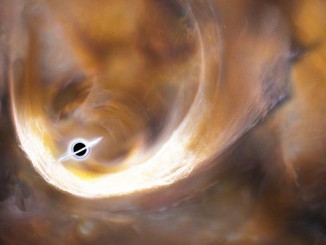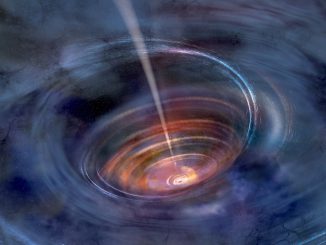
Imagine setting off a firework. It explodes with a flash and a bang and then it’s over. Now imagine setting off a firework that explodes and then keeps on exploding.
That’s what a team of astronomers led by researchers at the University of Southampton has found in a brilliant outburst first detected in the constellation Vulpecula in 2020 by the Zwicky Transient Facility in California. The object, eight billion light years from Earth, is known as AT2021lwx.
Looking back through archived data collected by the Asteroid Terrestrial impact Last Alert System, or ATLAS, they found the blast had actually been detected a year earlier. And it was still going on, dimming much more slowly than might be expected.
The detonation resembled the sudden flare of a supernova blast, but it didn’t stop and fade away like an exploding star. Maybe it was a black hole, gulping down a passing star in a tidal disruption event? Or a flaring quasar. But no host galaxy was present.
“Most supernovae and tidal disruption events only last for a couple of months before fading away,” Philip Wiseman, an astrophysicist at the University of Southampton and lead author of a paper in the Monthly Notices of the Royal Astronomical Society, told The New York Times. “For something to be bright for two-plus years was immediately very unusual.”
As it turns out, the best explanation is a dormant black hole up to a billion times more massive than the Sun feasting on a huge cloud of gas. As material is consumed, shock waves blast through the remnants and the gas swirling around the black hole in an accretion disk. At its brightest, the team concludes, the explosion was 2 trillion times as bright as the sun.
“AT2021lwx is a highly energetic event, arguably the most luminous optical transient ever observed,” the team wrote.
The brightest explosion on record is a gamma ray burst known as GRB 221009A, but that outburst was was over in a fraction of the time. The total energy released by AT2021lwx is far greater.
“AT2021lwx is an extraordinary event that does not fit into any common class of transient,” Wiseman said in an email to the Times. With a total energy equivalent to 100 supernovas, “it is one of the most luminous transients ever discovered.”



